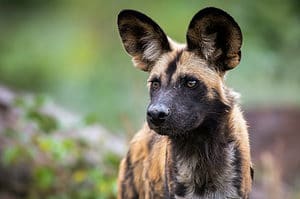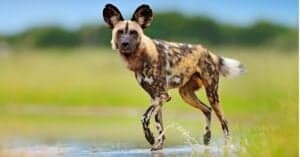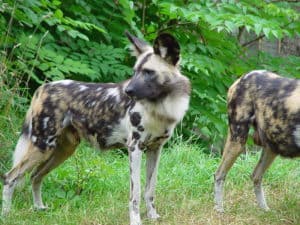Though there are several types of African wild dogs, there are only one species. In most places, “wild dog” is often associated with a house dog gone feral. But, the African wild dog is something else altogether. They are a species under severe threat, with only around 6,000 left.
There are 35 types of wild dogs, including the grey fox, coyote, wolf, and jackal, to name a few. But, there is only one wild dog in Africa, with five sub-species. The African wild dog is quickly becoming a historical footnote thanks to natural predation, a shrinking territory, farming, and vermin removal.
It’s a shame because African wild dogs share many loveable and endearing traits we see in domesticated dogs, including solid familial ties, fierce pack loyalty, and protective instincts over hurt companions. Also known as “painted dogs,” African wild breeds are beautiful and fascinating. It’s worth understanding them and their natural habitat.
5 Types of African Wild Dogs
For some, especially those without experience with African wildlife, it’s challenging to differentiate between the five subspecies of African wild dogs. Most of them look fairly similar, with only minor differences between them. The Somali wild dog is probably the easiest to separate from the other four visually.
1. Cape Wild Dog
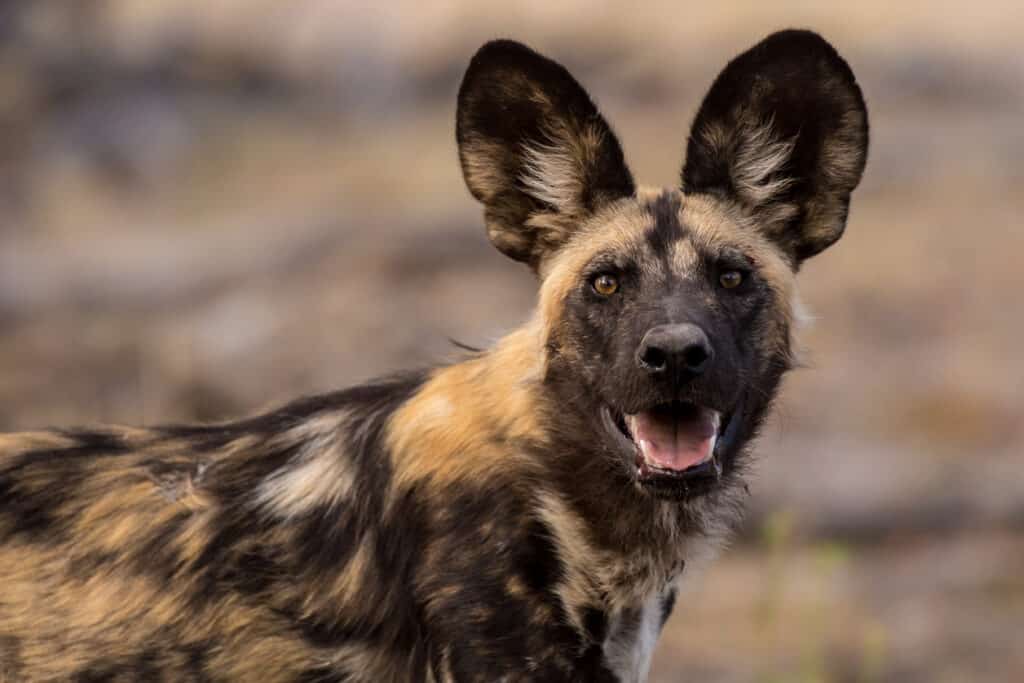
African wild dogs are highly social, fiercely protective, and loyal to their packs.
©William Steel/Shutterstock.com
It’s difficult to determine the subspecies of African wild dog breeds because they lump together in most of the available literature. In fact, “Cape hunting dog” is a label applied to African wild dogs, which creates confusion between it and “Cape wild dogs.”
The Cape wild dog is the largest of the five subspecies, and it’s also the most vibrant in color and patterning. Color patterns are one of the biggest factors separating Cape wild dogs and the other four subspecies. A Cape wild dog has far more orange and yellow fur than black.
2. East African Wild Dog
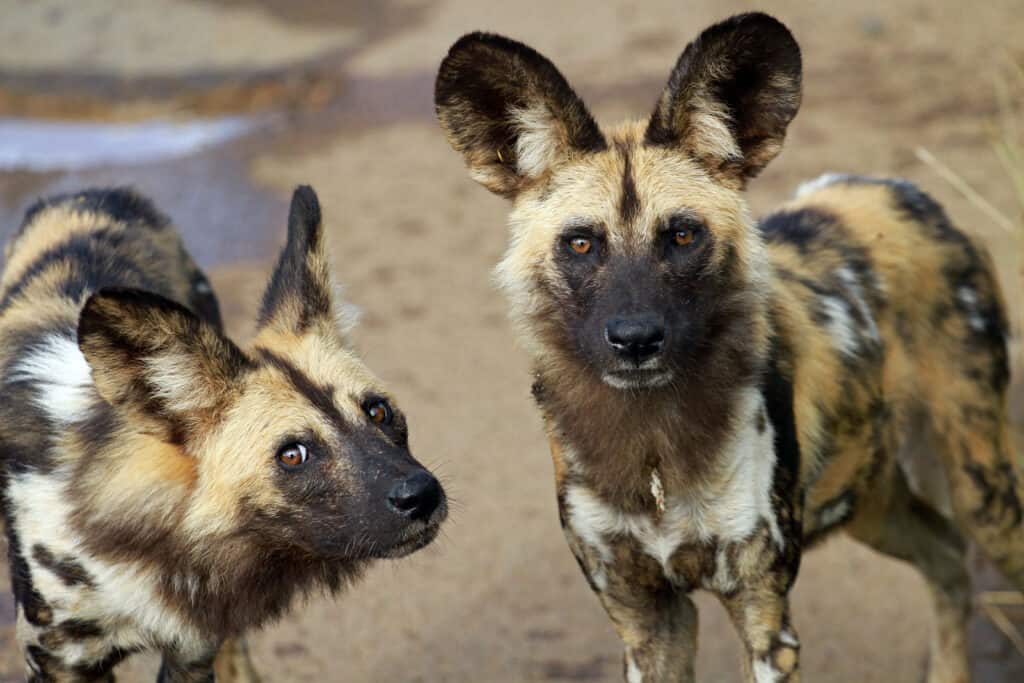
Though there are five types of wild dogs, some subspecies are closer to extinction than others.
©bayazed/Shutterstock.com
The East African wild dog belongs to the species Lycaon pictus subsp. Lupinus is characterized by a darker fur coat than its Cape wild dog kin. There’s not much yellow in the fur of an East African wild dog.
Outside of that, nothing much separates this subspecies from any other. Its territorial ranges are overlapping. Their food sources are the same, and their size is roughly equivalent to the average African wild dog size.
3. West African Wild Dog
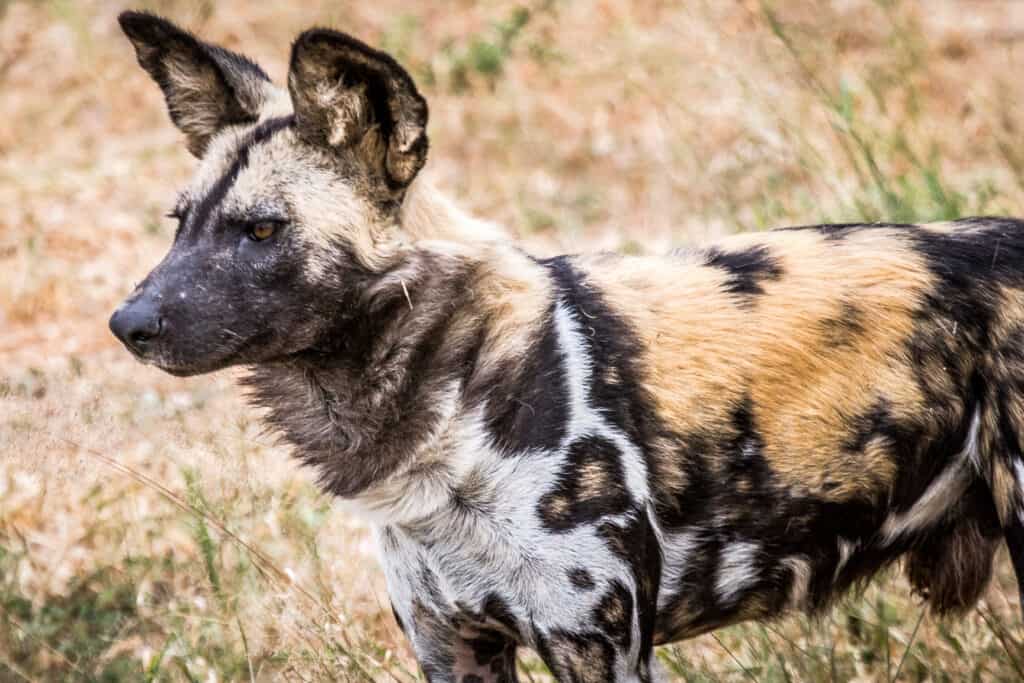
African wild dogs can reach speeds over 40 miles per hour and hunt in packs.
©iStock.com/Jorge Bernaro-Silva
Out of the five subspecies, the West African wild dog has suffered the most from predation and the territorial expansion of humans. They used to be a very widespread subspecies in their own right, but no longer.
Today, only about 70 adult West African wild dogs remain out of a population that once flourished across the southern part of the continent. The Lycaon pictus subsp. Manguensis matschie is a subspecies that is on the verge of extinction.
4. Somali Wild Dog
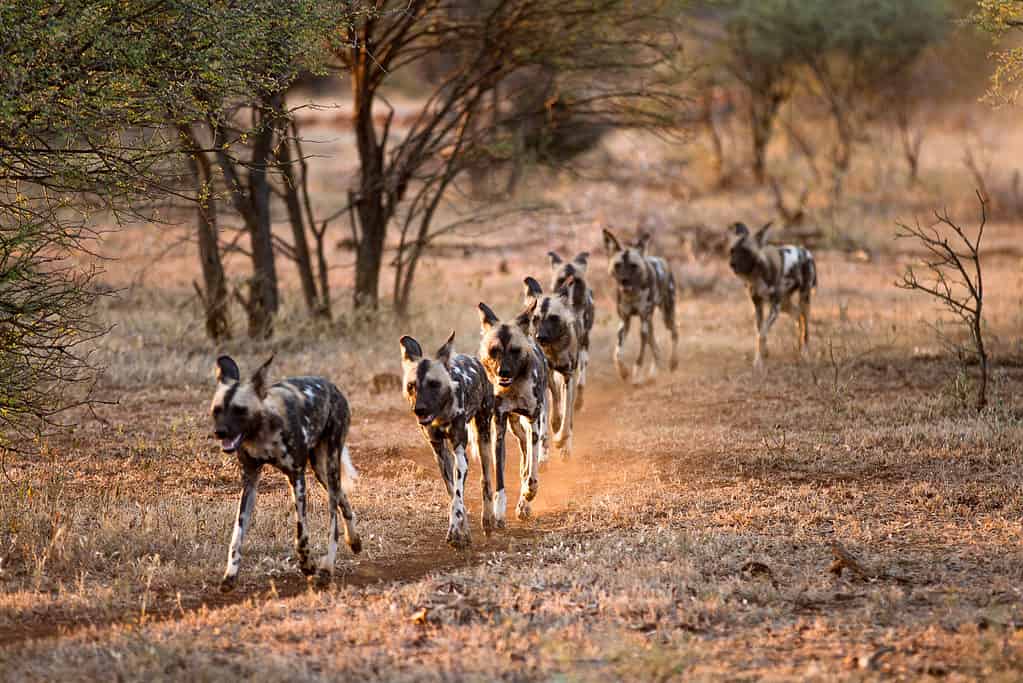
Like wolves, all five types of African wild dogs form dens.
©charles Hopkins/Shutterstock.com
Somali wild dogs are the smallest on this list and primarily reside in arid climates. Though they haven’t been ravaged to the same level as the West African wild dog, the Somali wild dog is probably the second most affected by human habitation.
The Somali wild dog goes under the Lycaon pictus subsp. Somalicus classification and they’re visually the easiest to separate from the rest of the African wild dog breeds.
5. Chadian Wild Dog

The African wild dog is a highly social breed.
©Richard Juilliart/Shutterstock.com
The Chadian wild dog (Lycaon pictus subsp. Sharicus) is the one subspecies of African wild dog that little is said about. They don’t seem to get the same attention they deserve. Some believe that it’s extinct in the Congo region.
The Manovo-Gounda St. Floris National Park is the only protected habitat where Chadian wild dogs live. They are similar to the Chad, West, and East African wild dogs in appearance, habitat, and diet.
Where Do African Wild Dogs Live?
The African wild dog is a highly social breed (with one another at least), and most roam the vast plains, mountain ranges, grasses, and woodlands of Sub-Saharan Africa. They are commonly spotted in Tanzania, Zimbabwe, Namibia, South Africa, Botswana, Mozambique, and Zambia.
They prefer the woodlands, though they can be found outside heavily forested areas. Lions are the natural predators of African wild dogs, so they tend to avoid areas where lion prides are commonly found.
Like wolves, all five types of African wild dogs form dens, usually abandoned areas such as hog holes or areas that aardvarks had previously dug out. Also, like wolves, wild dogs perceive their dens as an area of protection and will keep it in a state of repair, returning to it annually. This is despite their nomadic lifestyle. Despite their roaming and wanderings throughout the year, the pack mentality remains.
It’s also an excellent means for raising and protecting pups and the female since she is most vulnerable when birthing a new litter. A wild dog den functions as a semi-hospital as well. These dogs protect their own, and an injured wild dog will remain in place while the rest of the pack brings it food until it’s ready to hunt again.
What Do They Eat?
African wild dogs can reach speeds over 40 miles per hour and hunt in packs, strategically focusing on a single animal, with occasional exceptions. Due to their speed, pack-hunting capabilities, and powerful jaws, there is not much on the African continent that wild dogs can’t tackle.
Lions, crocodiles, hippos, rhinos, and other animals are beyond them, but their prey mainly consists of the animals lions pursue. Unfortunately, a shared menu sometimes brings African wild dogs, hyenas, and lions into the same territory.
However, they have specific tastes, including impala, waterbuck, blue wildebeest, African buffalo, reedbuck, and greater kudu. According to Hwange and Gonarezhou National Parks, the impala is easily the favorite on the African wild dog menu.
Are African Wild Dog Breeds Endangered?
The Ethiopian wolf is the most endangered animal in Africa. Unfortunately, the African wild dog is running a close second. Various estimates put them at anywhere between 5,000-7,000 in number. There are several contributing factors, and not all are purposefully nefarious.
For instance, lions happily prey on African wild dogs. Then there are the unintended consequences of human habitation, such as disease. Rabies and distemper are two devastating diseases African wild dogs encounter when they skirt too close to human habitation.
Purposeful eradication of African wild dogs is altogether common as well. They are considered a pest to local farmers, who react to threats on their livestock and produce by poisoning and outright shooting wild dogs. African wild dogs are to African farmers what coyotes and foxes are to American farmers.
Conclusion
Africa is home to an ever-shrinking wild dog population. Though there are five types of wild dogs, some subspecies are closer to extinction than others, especially the West African wild dog. As an endangered species, there are still some protected lands they can live on, though it’s probably only slowed the inevitable.
There are roughly 700 or so left in Zimbabwe, thanks to extensive efforts to protect African wild dogs, and between 5,000-7,000 overall. Like domesticated dogs, African wild dogs are highly social, fiercely protective, and loyal to their packs.
The photo featured at the top of this post is © Richard Juilliart/Shutterstock.com
Thank you for reading! Have some feedback for us? Contact the AZ Animals editorial team.




